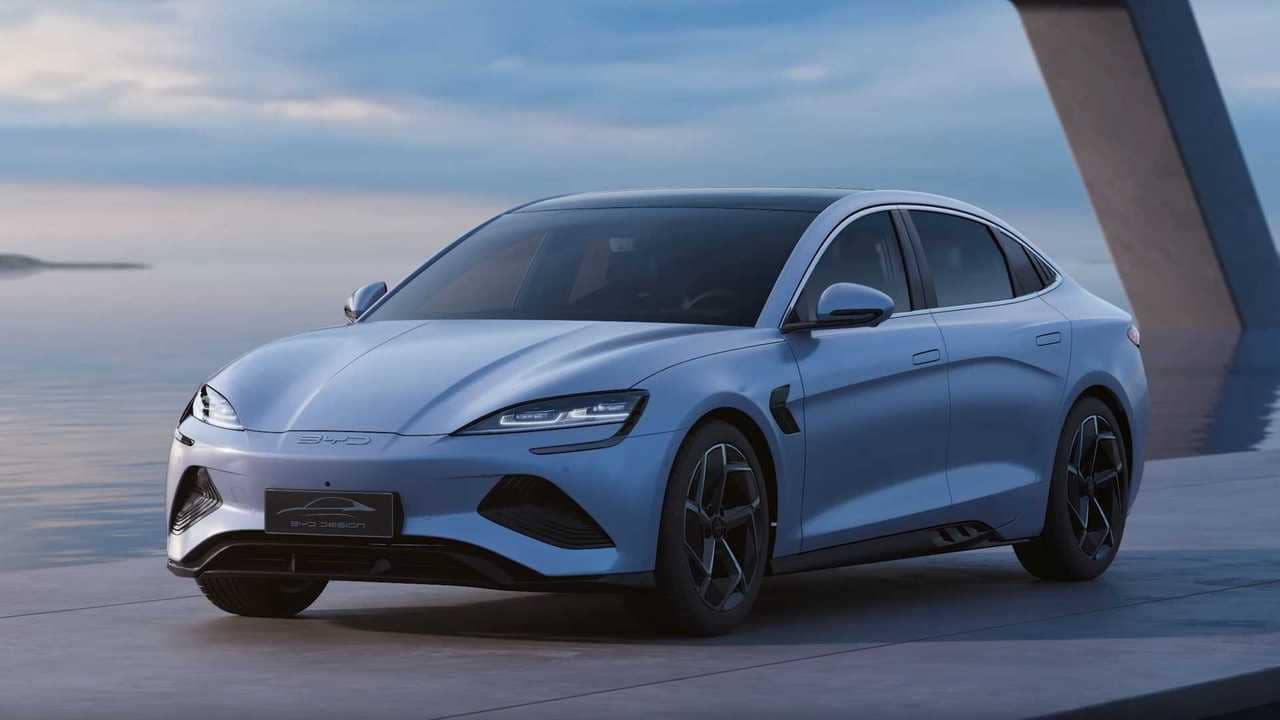The electric vehicles industry is rapidly becoming a key driver of global economic transformation, ushering in a new era of sustainable growth. With advancements in technology and increasing environmental awareness, electric vehicles are not just a trend but a pivotal shift impacting industries across the board.
Navigating the Global Shift in Automotive Paradigms
In recent years, demand for electric vehicles has increasing. The global electric vehicle (EV) market is experiencing a significant surge. The top consumers leading the electric vehicle market include Europe at 40% in 2023, followed by China at 38%, and North America at 9%. This increasing growth is, of course, impacting the global automotive paradigm.
Impact on Global Automotive Paradigms
The rapid advancements in technology, declining battery costs, and rising environmental awareness have made electric vehicles increasingly accessible and appealing to consumers. Consequently, major automotive companies are now heavily investing in EV production, while new market entrants drive competition and spur innovation. This growing presence of electric vehicles is reshaping the traditional automotive paradigm.
Furthermore, manufacturers are shifting their focus from internal combustion engines to electric powertrains, necessitating significant changes in production processes, supply chains, and workforce skills. This transformation impacts not just automakers, but also energy providers, charging infrastructure developers, and governments. All these stakeholders play a critical role in supporting and expanding the electric vehicle ecosystem.
Exploring the Evolution and Impact of Electric Vehicle Technology
Economic Forces Driving the Industry
This paradigm shift has been propelled by several economic forces that are fostering the growth of the electric vehicles industry, including:
- Government Policies and Incentives: Governments are implementing policies and incentives to promote the adoption of electric vehicles. This includes tax breaks, subsidies for producers and consumers, and investments in charging infrastructure.
- Technological Advancements: Continuous improvements in battery technology, energy efficiency, and vehicle performance are making electric vehicles more competitive with traditional vehicles.
- Environmental Issues: Increasing awareness of climate change and environmental degradation is motivating consumers, businesses, and governments to seek more environmentally friendly alternatives. Electric vehicles, with their lower emissions, offer a viable solution for reducing carbon footprints.
- Economic Benefits: Electric vehicles offer long-term savings in fuel and maintenance costs. As energy prices fluctuate, the stability and predictability of electricity costs make electric vehicles an economically attractive option for many consumers.
How Regulations and Capital Shape the Electric Vehicles Industry in the Future?
The rapid growth of the electric vehicles industry is fueled by substantial investments and supportive regulations. Major automotive companies, innovative startups, and a steady influx of venture capital and government funding are key elements driving this industry forward.
Influence of Global Regulatory Framework and Policies
Government regulations are pivotal in shaping the EV market. Worldwide, countries are implementing policies to reduce carbon emissions and promote cleaner transportation options, thus creating a favorable environment for EV adoption. For instance, the European Union has set strict emissions standards, compelling automakers to invest heavily in EV technology. China, leading the global EV market, supports EV manufacturing and adoption through subsidies and mandates.
In the United States, policies like California’s Zero Emission Vehicle (ZEV) program and the federal Clean Vehicle Tax Credit are encouraging the production and purchase of electric vehicles. These regulations not only drive automakers to accelerate their shift to electric powertrains but also boost investor confidence by ensuring a stable and supportive market environment.
Incentives and Regulations Shaping the Future
Governments around the world are offering various incentives to make electric vehicles more attractive to consumers and businesses. These incentives include tax credits and grants that reduce the upfront cost of purchasing an EV. Investments in charging infrastructure are also making it easier for people to switch to electric cars by ensuring widespread access to charging stations.
Additionally, long-term regulatory goals, such as phasing out internal combustion engine vehicles, are provided. For example, many countries have announced plans to ban the sale of new gasoline and diesel vehicles by certain dates, sending a strong signal to both automakers and consumers about the future of transportation.
Examines the Electric Vehicles Supply Chain and Manufacturing Process in Industry

The rapid expansion of the electric vehicle (EV) market is driving significant changes in the automotive supply chain. One of the main challenges in this supply chain is the procurement of critical materials such as lithium and cobalt, which are essential components for battery production. Lithium and cobalt are crucial to the performance and longevity of EV batteries, but their supply is often limited by geopolitical factors, environmental concerns, and ethical issues surrounding mining practices.
More than 95 percent of the world’s lithium supply comes from countries such as Australia, Chile, and China, while cobalt is mostly mined in the Democratic Republic of Congo (DRC), raising concerns about human rights and environmental impacts. Price fluctuations and limited availability of these materials can lead to supply chain bottlenecks and increased production costs for EV manufacturers.
To mitigate these challenges, companies are investing in sustainable mining practices and recycling programs. For example, Tesla is developing a lithium refinery in Texas, aiming to internalize production and reduce dependence on external suppliers. Additionally, advances in battery technology, such as solid-state batteries, promise to reduce reliance on these critical materials by using alternative elements or requiring smaller quantities.
Advances in Manufacturing Processes
The electric vehicles industry is also experiencing significant advances in manufacturing processes, which are critical to increasing efficiency, reducing costs, and incorporating automation and AI. These advances include:
- Increased Efficiency: Automakers are adopting lean manufacturing techniques to simplify production and minimize waste. For example, Tesla’s Gigafactories use highly automated production lines that increase efficiency and output. By integrating production processes under one roof, these facilities can produce batteries and vehicles faster and at lower costs.
- Cost Reduction: Reducing production costs is essential to making EVs more affordable for consumers. Innovations such as modular production and the use of lightweight materials help reduce costs. For instance, Ford focuses on modular architecture that allows parts to be shared across different models, thereby reducing complexity and production costs.
- Automation and AI: The integration of automation and AI in the manufacturing process is transforming the automotive industry. Robotics and AI-based systems are used for tasks such as welding, painting, and assembly, increasing precision and reducing human error. AI algorithms also optimize supply chain logistics, ensuring timely delivery of materials and efficient inventory management.
Key Trends Shaping Indonesia’s Automotive Industry in 2024
Strategic Dynamics and Consumer Trends in the EV Market
To understand the electric vehicles industry strategy, we will first look at the comparative strategies used by traditional car manufacturers versus new market entrants.
Traditional automakers such as General Motors (GM), Ford, and Volkswagen are leveraging their extensive manufacturing capabilities and brand recognition to transition to electric mobility. These companies are investing heavily in electric vehicle technology and infrastructure to maintain their market share. For example, GM plans to invest $35 billion in electric and autonomous vehicles by 2025. Likewise, Volkswagen has committed $73 billion to the development of electric vehicles and digital technology by 2025.
In contrast, new entrants to the market such as Tesla, Rivian, and Lucid Motors are focusing on innovation and niche markets to disrupt the automotive industry. Tesla, for example, has pioneered the development of high-performance electric vehicles and extensive charging infrastructure, giving it a competitive advantage. Rivian targets the adventure and utility vehicle segments, while Lucid Motors provides luxury and performance with its high-end EV models.
Consumer Trends and Implementation Strategies
Consumer preferences in the electric vehicle market are shaped by factors such as range, charging infrastructure, and cost. A survey conducted by Volvo revealed that 58% of respondents cited range anxiety, or the fear of running out of battery power, as a significant concern for prospective electric vehicle buyers.
Price sensitivity is another key factor for consumers. Although the initial cost of electric vehicles is higher than traditional internal combustion engine vehicles, the total cost of ownership, including maintenance and fuel savings, is often lower.
Therefore, increasing battery range and expanding charging infrastructure is critical. Government incentives also play an important role in making electric vehicles more affordable for consumers.
Additionally, manufacturers can educate consumers about the benefits of electric vehicles, such as lower operating costs, reduced emissions, improved performance, and technological advances. This education can help change perceptions and drive adoption. Automakers and governments can collaborate on awareness campaigns and provide transparent information about incentives and the total cost of ownership.
The Transformative Impact of Electric Vehicles Industry on Global Markets and Trade

Economic Impact and Job Creation
The electric vehicles industry has a significant economic impact, creating numerous jobs and influencing global trade patterns. As production from traditional car manufacturers and new entrants increases, the demand for skilled labor in manufacturing, software development, and battery technology is rising. For example, Tesla’s Gigafactories have created thousands of jobs in regions such as Nevada and Texas in the United States, and Brandenburg in Germany, with a total workforce of more than 70,000.
In addition to direct employment, the electric vehicle industry also creates jobs in related sectors such as charging infrastructure, renewable energy, and supply chain logistics. Expanding the charging network, for example, requires the installation and maintenance of charging stations, thereby creating jobs for electricians, engineers, and technicians. Additionally, the switch to renewable energy sources to power electric vehicles is also increasing employment in the solar and wind energy sectors.
Influence on Global Trade Patterns
The emergence of electric vehicles is also changing global trade patterns. As mentioned previously, countries rich in lithium, cobalt, and other critical minerals are becoming important players in global supply chains. This increasing demand for raw materials is leading to new trade alliances and economic partnerships.
Conversely, countries that rely heavily on oil exports may face economic challenges as the global shift towards electric mobility reduces demand for fossil fuels. This shift could lead to significant economic restructuring in these regions, potentially impacting the global trade balance and geopolitical relations.
Future Industry Growth Predictions
The electric vehicles industry continues to demonstrate promising growth. According to a report by the International Energy Agency (IEA), global electric vehicle sales are expected to reach 23 million units by 2030, up from 14.1 million units in 2023. This growth is driven by falling battery prices, increasing environmental awareness, and supportive government policies.
Technological advances will also accelerate industry growth. Innovations in battery technology, such as solid-state batteries, promise increased energy density, reduced charging times, and lower costs. Additionally, advances in autonomous driving technology and vehicle-to-grid integration are expected to enhance the appeal of electric vehicles, making them more attractive to consumers and businesses.
With the widespread adoption of electric vehicles, we can anticipate significant long-term global economic changes. As electric vehicle technology becomes more widespread, we expect a decline in global oil consumption, leading to lower oil prices and spurring the growth of environmentally friendly energy.
The Future of the Automotive Industry in Indonesia
Subang Smartpolitan: Integrating Industrial Development with EV Market Expansion

Subang Smartpolitan, Indonesia’s new industrial hub, is strategically designed to support the rapid growth of the electric vehicle industry. This industrial area, located in Subang, West Java, is expected to become a smart city that integrates comprehensive infrastructure, digital technology, and sustainable practices to create an optimal environment for businesses and residents.
With adequate infrastructure and a strategic location, Subang Smartpolitan has great potential to attract investment, especially from the electric vehicle sector. Notably, BYD, a leading EV manufacturer has established highlight Subang Smartpolitan’s readiness to become a prime location for electric car manufacturers. This development underscores the area’s capacity to support extensive EV manufacturing and supply chain operations.
Additionally, the development of Subang Smartpolitan aligns with global economic trends and the increasing demand for electric vehicles. By fostering a business-friendly environment with state-of-the-art facilities and support for sustainable practices, Subang Smartpolitan is the ideal place for those looking to invest in building an electric vehicles industry in the heart of Indonesia’s industrial landscape. For further information about Subang Smartpolitan, you can contact our professional team. We are ready to assist you.


